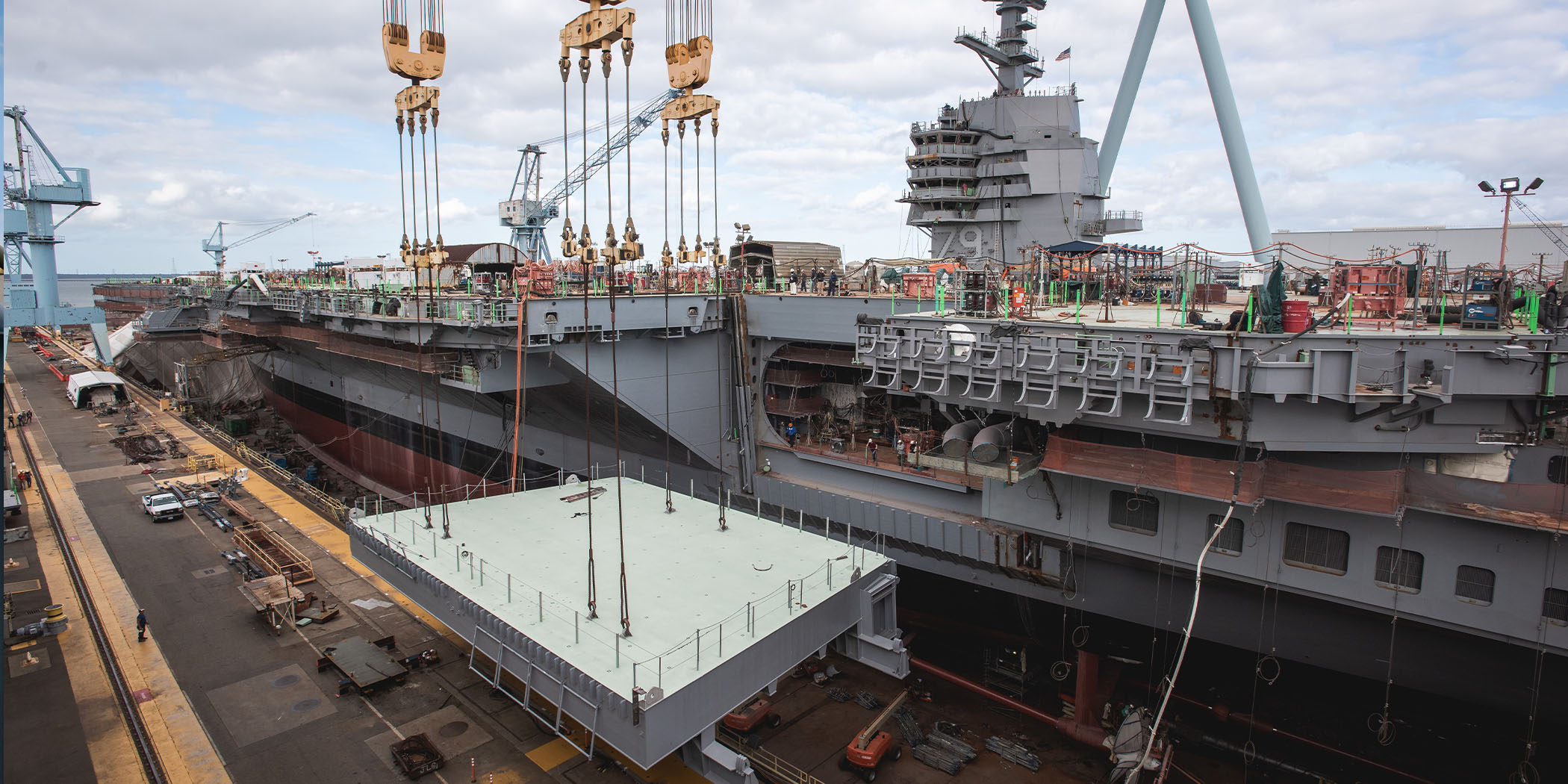 An aircraft elevator is installed on John F. Kennedy (CVN 79) in 2019.
An aircraft elevator is installed on John F. Kennedy (CVN 79) in 2019. Improving the Process
Published June 2, 2021
The shipbuilders responsible for installing the massive elevators that will move aircraft on John F. Kennedy (CVN 79) faced quite a learning curve. However, they were able to learn as they worked and gain efficiencies that will make the job safer and faster on future carriers.
CVN 79 may be the second Ford-class carrier, but it is the first to have an electric aircraft elevator (EACE) system. Older ships used hydraulic elevators. “It’s a smaller footprint as far as machinery,” said Construction Supervisor Adam Horak (X01). “The capacity of the elevator is the same, but there’s a reduction in operation time compared to Ford, and it still meets the sortie rate.”
Shipbuilders learned and became more efficient as they moved through the process of installing the three elevators on CVN 79. The latest phase of elevator construction involved installing the cables that support and drive the platform. It took X36 and X43 shipbuilders about 30 days to install the cables on the No. 3 elevator – which was the first installed on the ship. The last elevator was cabled in about 21 days.
Looking forward to Enterprise (CVN 80) and beyond, shipbuilders may be able to cut the installation time in half. That’s partly because the team found they can set the machinery on the platen. That’s much earlier than they could with the old elevators and allows them to take advantage of things like crane service, according to X43 General Foreman Matthew Obergfell and X43 Foreman Mark Neal.
“Our goal is to improve the process for the future,” Neal said. “If we go with the plan of having the elevators built on the platen before we load them, it will be a lot safer and it will take a lot less time. Those are the big things for us moving forward.”
He also credited Randall Nelson (E24) and David Swain (E24) for their support throughout the installation process. Neal said his crew came into the project with very little experience, but said they did “an outstanding job.”
The X36 shipbuilders who run the cables that move the elevators up and down also gained efficiencies they plan to carry forward, according to X36 Foreman Jimmy Key.
On CVN 80, the team hopes to have all of the elevators operational and in the testing phase before the ship leaves dry dock. Operational testing on the elevators on CVN 79 – which left dry dock in December 2019 – is planned for later this year.